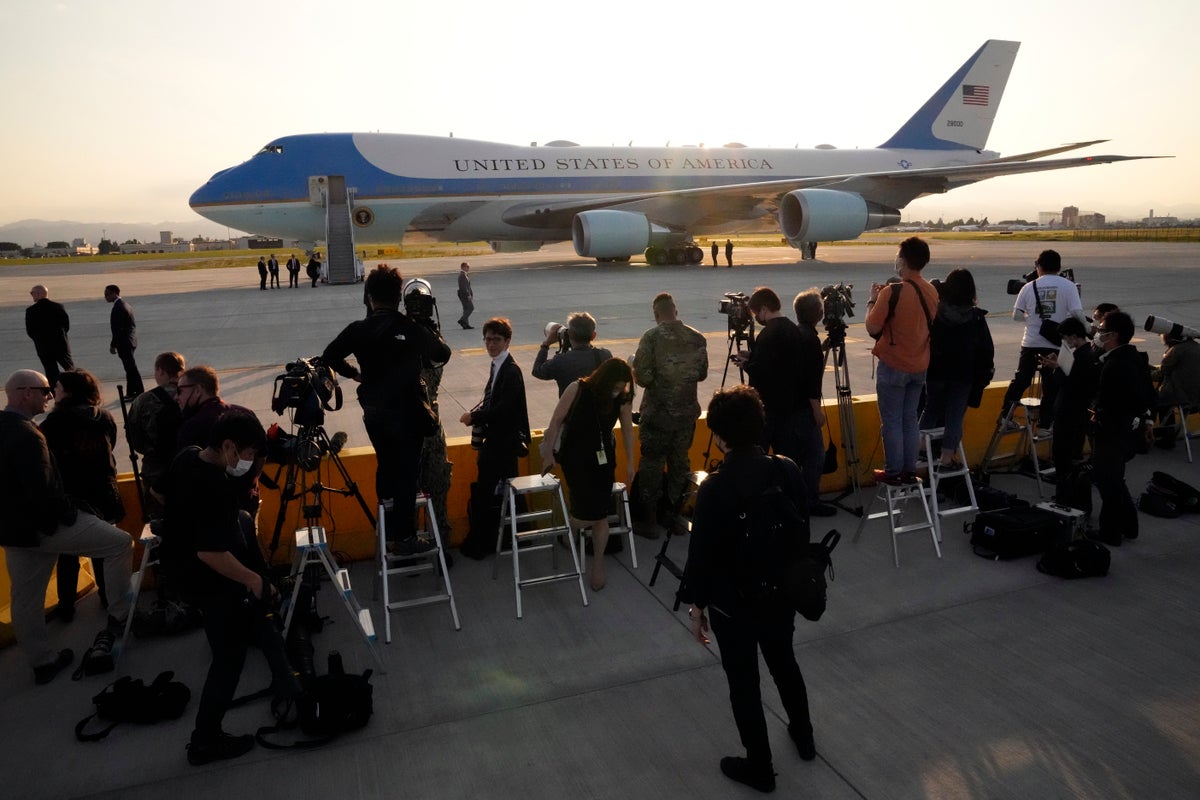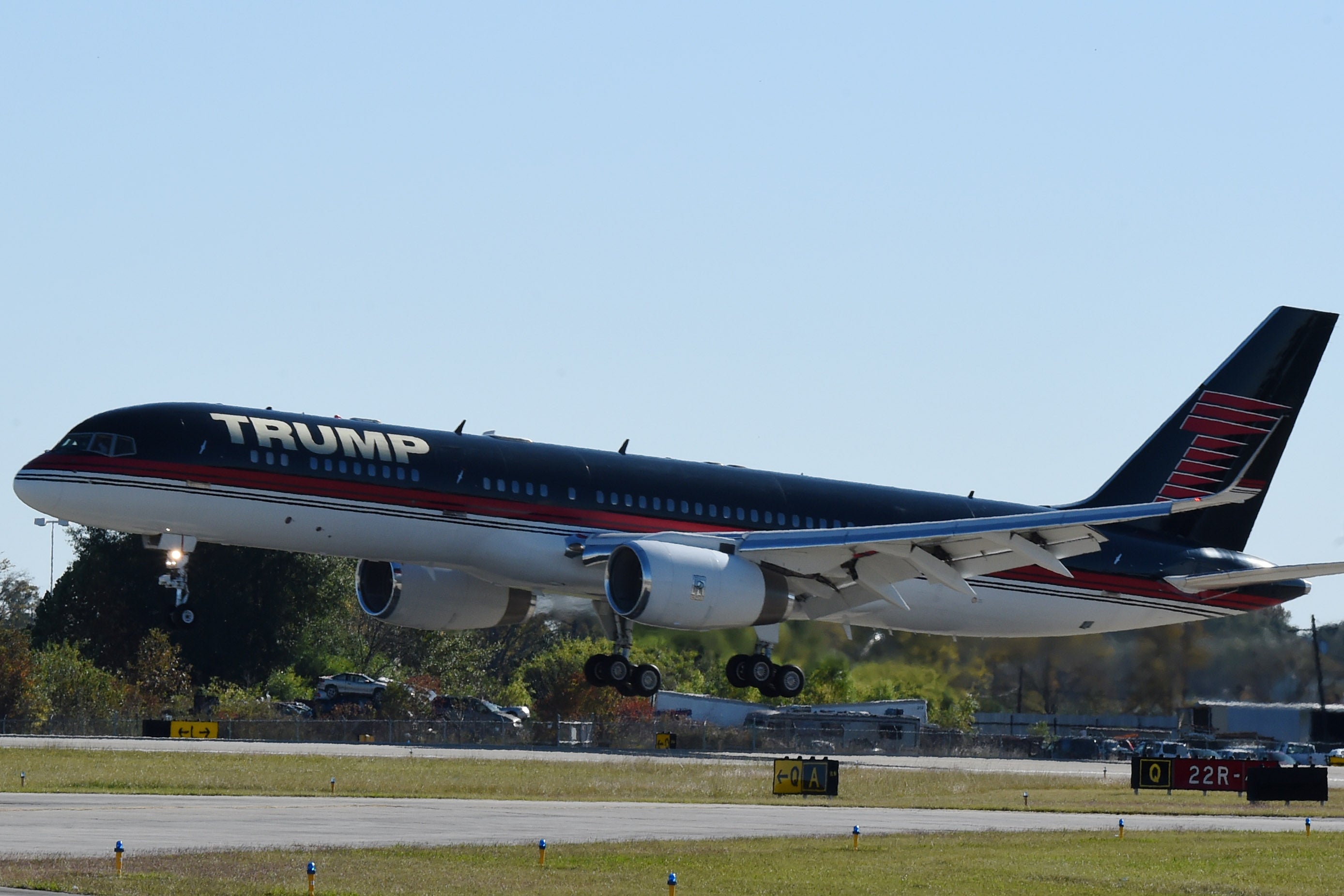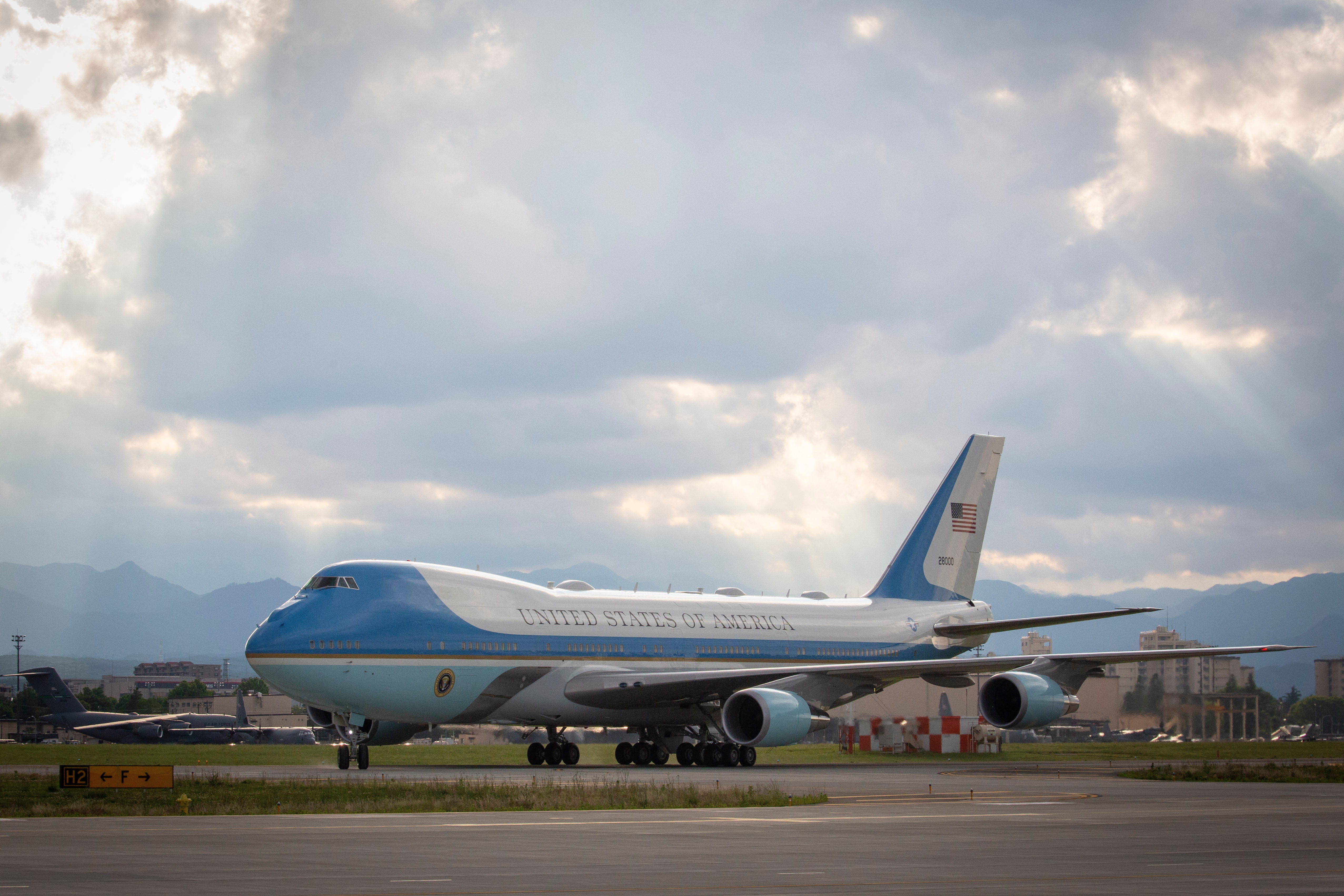
The Biden administration has decided to abandon Donald Trump’s suggested paint job for the new Air Force One aircraft after a study showed it could increase costs and following reports that it could be a safety hazard.
Mr Trump’s colour scheme had the planes’ underbelly and engines being painted in a dark blue shade, which could lead to higher temperatures onboard.
The paint job would have required further measures to cool down some parts of the plane, which could make it more expensive, according to the Air Force.
“The Trump paint scheme is not being considered because it could drive additional engineering, time, and cost,” a Biden Administration official told Politico.
The two new presidential planes will be two modified Boeing 747-8s. They will likely come in the same light blue and white colour scheme as previous iterations, which first appeared during the presidency of John F Kennedy. Boeing would have had to pay to fix the heating issue.
Air Force budget documents show that the planes aren’t set to take to the skies until 2026.
Mr Trump entered discussions concerning the new planes soon after entering the White House. He tweeted in February 2017 that the government had decreased the price of the contract with Boeing by “over $1 billion”.
Shortly after, Boeing signed a fixed-price contract with the Air Force to manufacture the planes. This means that the company would have to pay for any extra costs.
Mr Trump told ABC News in 2019 that he wanted to change the paint job of the planes. “The baby blue doesn’t fit with us,” he added to Fox News. “I like the concept of red, white and blue and the classic, and I think it’s going to look much better actually.”
The former president’s colour scheme is similar to that used on his own private jet.

In 2018, the Air Force awarded Boeing a contract worth $3.9bn to manufacture two 747s to replace the current Air Force One aircraft, which are based on the 747-200B and have been used since the 1990s.

The building of the planes is facing delays caused by supply chain issues and a disagreement between Boeing and a subcontractor as well as a shortage of qualified mechanics, according to the Government Accountability Office.
Budget documents show that the planes may not fly until four years in the future, which is two years later than was initially planned. Boeing has so far lost almost $1.1bn on the project, Politico reported earlier this month.
Air Force spokesperson Ann Stefanek told the outlet that “further analysis concluded darker colors, among other factors, on the underside of the VC-25B aircraft might contribute to temperatures exceeding the current qualification limits of a small number of components”.







